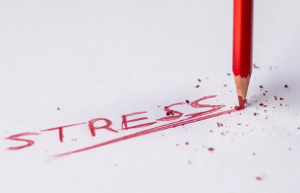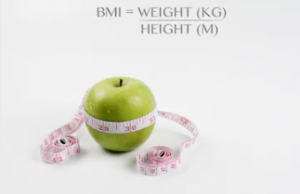× Close


 Planning a daily schedule is key to staying sane and continuing to work toward your dream of parenthood,
Planning a daily schedule is key to staying sane and continuing to work toward your dream of parenthood,
In our Fertility Tools Series, we will be teaching you simple but powerful tools for reducing stress, improving your sleep, getting the balance of food and exercise right and managing the rollercoaster that trying for a baby can be.
Your job for right now is to take out your calendar and set a time in your diary every day for 20 minutes to put these fertility enhancing tools into practice. To ensure you use this time to maintain (or even grow new) fertility healthy habits.
Want to learn much more? Join our next workshop. Need further support or want to discuss what program is best for you? Book a FREE 10 minute Consultation and see if we can help you in the road to becoming a parent.
 This is the first in our 5-part series of ‘Untangling from Worries’. In today’s post you will learn the first step in creating space from thoughts through practicing the skill cognitive decentering.
This is the first in our 5-part series of ‘Untangling from Worries’. In today’s post you will learn the first step in creating space from thoughts through practicing the skill cognitive decentering.
In the remaining 4 steps, you will build on this skill by learning to work with critical self-judgement, ruminative thinking, and rewire the neural pathways that keep you stuck in these patterns.
The cumulative benefit of integrating these skills into daily life will be to loosen the hold of judgements, thoughts and stories over you. All the views and beliefs about how you should be and what you should have done and what other people should do, will all start to release their power over you.
You have been undergoing fertility treatment, but it may have been delayed, or is taking longer than expected. Or you have been trying naturally, and now may be worried that stress is making it even harder to conceive. In short, your dream of becoming a parent appears further out of reach than ever.
 It would not be surprising, if you find your mind spending much of the time cycling through all kinds of worst-case scenarios: “How will I cope if I never get pregnant?” “What else can possibly give my life meaning?” “What will happen if I lose my job and don’t have money to pay for fertility treatments?”
It would not be surprising, if you find your mind spending much of the time cycling through all kinds of worst-case scenarios: “How will I cope if I never get pregnant?” “What else can possibly give my life meaning?” “What will happen if I lose my job and don’t have money to pay for fertility treatments?”
And that’s just before breakfast!
Today, we are going to share a very powerful technique for easing the impact these worries and thoughts have on your mood, and well-being. Like all of our interventions, this technique, is supported by multiple scientific studies to reduce anxiety and depression and contribute to improved mental health (1). This technique is known to psychologists and health professionals as cognitive decentering. This is the first crucial step in untangling ourselves from worries.
Let’s get one thing clear – it is not that your worries are not legit. Your worries are completely valid. However, you do have a choice about the ‘impact’ they have on your mood and your physiological response.
 You can allow your worries to color your mood, leaving you in a state of despair, with a knot in your stomach, and a chest so tight it hurts. Or you can choose to use this tool to create a buffer zone between the worry and the cascade of emotions and physiologically based aftereffects.
You can allow your worries to color your mood, leaving you in a state of despair, with a knot in your stomach, and a chest so tight it hurts. Or you can choose to use this tool to create a buffer zone between the worry and the cascade of emotions and physiologically based aftereffects.
The wise Austrian neurologist and psychiatrist, Victor Frank put it much more eloquently:
“Between stimulus and response there is a space. In that space is our power to choose our response. In our response lies our growth and our freedom”
So how do we create that space? A new thought comes into our mind the moment another leaves. However, there is a crucial distinction between having an awareness of thoughts and getting lost in thought.

Imagine that you are watching a movie in a room with a group of people around you and you are getting completely absorbed into the movie and its plotline. Now, imagine that you are in the room and noticing that you are in a room watching a movie; that there are sounds coming from the speakers, smells of popcorn, that there is a movie playing on the screen in front of you, and people around you. Observing your thoughts is like noticing that you are watching a movie, as opposed to being absorbed by the movie.
The goal is not to have a mind without thought. Thoughts are part of our make-up as homo sapiens. They are what allow us to be creative, to solve problems, to build bridges, to make medicine, and to speak in complex language. We need thoughts and mental representations for all of that.
However, there is a world of difference between being drowning in the belief “I can’t do anything right” and zooming out, and noticing that you had a thought, “I can’t do anything right.”
Seeing thoughts this way changes the power they have over you.
 It can feel similar to being in an airplane flying into a cloud, and the cloud becomes your whole world. But when you have moved through and out of it, and you can see the entire sky with the cloud a part of it, but it no longer defines your universe.
It can feel similar to being in an airplane flying into a cloud, and the cloud becomes your whole world. But when you have moved through and out of it, and you can see the entire sky with the cloud a part of it, but it no longer defines your universe.
By acknowledging the presence of thoughts rather than believing them, we don’t generate the tension and painful feelings that are usually associated with such anxious thinking. The ability to choose is precious.
In our guided audio exercise today, you will learn to recognize, in a non-judgmental manner, that thoughts are mental phenomena that come and go.
 If you do this practice regularly, you will find that after a while, the stories and thoughts will all come and go and will begin to lose their hold over you. All the views and beliefs about how you should be and what you should have done and what other people should do, will all start to release their power over you.
If you do this practice regularly, you will find that after a while, the stories and thoughts will all come and go and will begin to lose their hold over you. All the views and beliefs about how you should be and what you should have done and what other people should do, will all start to release their power over you.
In this post, we have talked about the first step in untangling from worries. in our part 2, we cover the second step: what to do about those pesky thoughts and stories that just keep on coming back— you know, the ones I am talking about………
If you found this practice useful, don’t wait any longer to join our next workshop and master the remaining 4 steps. You can get a bit closer to your dream of becoming a parent.
Not sure if our program is right for you? Request a FREE 10 minute Consultation to find out.
This is the first in our 3-part series of ‘Stress Eating is Real’. In today’s post you will learn to understand the nature of our challenge and how to curb stress eating in 3 steps.
 If you find yourself doing lots of stress eating right now, if you find yourself gravitating towards the cookie jar far more frequently than you know you should, we promise, you are not alone.
If you find yourself doing lots of stress eating right now, if you find yourself gravitating towards the cookie jar far more frequently than you know you should, we promise, you are not alone.
But, you have been warned by your fertility health doctor to keep your weight in check to ensure optimal fertility.
What a challenging situation!!
We know that weight matters when it comes to fertility, and that being even slightly overweight may affect your fertility. Obesity is one of the most common causes of preventable infertility in women (1).
Let’s talk about the very natural urge to stress eat during this incredibly challenging time, and how best to manage it.
 First of all, stress eating is real. Also known as emotional eating, it is defined as the act of eating in response to an emotional state, rather than hunger.
First of all, stress eating is real. Also known as emotional eating, it is defined as the act of eating in response to an emotional state, rather than hunger.
What we know by intuition is well supported by research: we eat more when we are under stress (2). There are psychological and biological reasons for eating when we feel stressed.
When we are overwhelmed by strong unpleasant emotions, eating makes us feel better, at least in the short term (3). Some women are more likely to binge, whereas others constantly graze throughout the day or night. Both are ways of soothing ourselves from feeling scared or lonely.

We also eat to distract ourselves from boredom. The reduced structure organizing our days under this lockdown have disrupted our routines, and now the kitchen is always right there in the next room!.
The biological reason we overeat when stressed is that stress increases the secretion of cortisol, a hormone which results in increased appetite, and, in particular, craving for fatty and sugary foods (4).
So, now that we understand why we do it, let’s talk about what we can do about it. Let’s talk about 3 easy steps to curb it!

There are actually foods shown to reduce anxiety, and boost immunity (5).
 Research has shown that “mindful eating” has also been effective in reducing the amount of “stress” food we seem driven to consume (6).
Research has shown that “mindful eating” has also been effective in reducing the amount of “stress” food we seem driven to consume (6).
Our guided exercise today will lead you through mindfully eating a piece of chocolate.
Warning: You will probably feel very silly doing this exercise.
 In fact, it may seem to contradict everything we have just said, but really it doesn’t. If you beat yourself up for the way you eat, and then try to restrict food later to make up for overeating, then you will continue to fuel that cycle.
In fact, it may seem to contradict everything we have just said, but really it doesn’t. If you beat yourself up for the way you eat, and then try to restrict food later to make up for overeating, then you will continue to fuel that cycle.
Accept that you will have bad days. And when you do, be kind to yourself and move on. No need to make a song and dance out of it.
Allow yourself permission to eat the foods you enjoy. Just eat them mindfully.
Now that you understand why you are gravitating to that cookie jar more often, we hope that next time you do, you will take a few deep breaths and just eat one. VERY slooooooowly. And then let it go.
In this post, we have talked the reasons for stress eating and useful tips to curb this. In our parts 2 and 3, we cover other key tips to get your body as healthy as possible and get you on the right track for a successful conception.
If you found these tips and audio useful, don’t wait any longer to join our next workshop. You can get a bit closer to your dream of becoming a parent.
Not sure if our program is right for you? Request a FREE 10 minute Consultation to find out.
This is the first in our 2-part series of ‘Riding the Rollercoaster of Emotions’. In today’s post you will learn how to “build a muscle” to respond to painful emptions.
 Fear, Concern, Sadness, Frustration, Worry, Apathy, Exhaustion. This just about sums up the rollercoaster of emotions you may go through on a typical day. The journey through infertility is frequently a journey through peaks and troughs of emotions: hope and excitement when a cycle is going well, followed by crashing disappointment and grief when a test comes back negative.
Fear, Concern, Sadness, Frustration, Worry, Apathy, Exhaustion. This just about sums up the rollercoaster of emotions you may go through on a typical day. The journey through infertility is frequently a journey through peaks and troughs of emotions: hope and excitement when a cycle is going well, followed by crashing disappointment and grief when a test comes back negative.
 Today, we are going to introduce you to a powerful tool that might help you respond differently to these intense emotions; a tool for managing the ups and downs, so that you no longer feel you are at the mercy of every FSH reading.
Today, we are going to introduce you to a powerful tool that might help you respond differently to these intense emotions; a tool for managing the ups and downs, so that you no longer feel you are at the mercy of every FSH reading.
This method for responding to painful emotions is a bit like building up a new muscle, an emotional muscle, that increases your flexibility in first confronting your emotions, then making space for them, and lastly moving through them.
In our culture today, there is a common assumption we need to do something when we feel inner distress. Fix it, control it, distract from it, exert brute force over it —SOMETHING! It is a paradox, but if we learn to stay with the feelings: the sadness, the rage, or the fear: breathe into them, allowing the feelings to intensify and wane, learn their contours without racing for the exits, and meet our distress with some kindness, it will pass.
.
 What if the way to heal and grow, was actually moving through our feelings and not around them?
What if the way to heal and grow, was actually moving through our feelings and not around them?
Famed psychiatrist and philosopher Carl Jung contended that “what you resist not only persists, but will grow in size.”
The opposite of resisting, is to turn towards a situation, and accept that this is really how it is right now. Acceptance does not require that we like what we are accepting, but asks for you to say, ‘Yes I don’t like it, and this is the way it is right now.’ Acceptance is about creating space—, bit by tiny bit—, for your emotions.
You might understandably bristle at this idea. It is important to distinguish that acceptance is not complacency about your life situation or circumstances. It is different from resignation – and does not meant that we stop trying to change a situation, but the observing and acknowledging your emotional reaction to the situation can be wiser and healthier.
 This method of responding to painful emotions is like building up a new muscle, an emotional muscle, that increases your flexibility in:
This method of responding to painful emotions is like building up a new muscle, an emotional muscle, that increases your flexibility in:
1) becoming more aware of your emotions, ‘Oh yes, that is how sadness feels in my body,’ or ‘Oh, that tightness in my jaw and chest, that is anger; and
2) learning to make space, to tolerate, to honor these feelings. With practice, it can become a fine-tuned muscle – that knows when to allow and let go into a feeling, when to expand, when to stay with it, when to retract.
The more you run away from distress — distract, avoid, channel it into blaming yourself or others or anger — the more it will grow.
You may get some temporary relief, and be tricked into thinking that distraction works, but there is a backlash effect, and next time you are triggered — the next insensitive remark, rejection, criticism — a tidal surge of grief, hurt, anger, sadness will flood over you. Your painful feelings have a way of continuing to knock on your door, asking that they to be attended to. If you refuse to respond to them, they will find other, more pernicious ways of getting your attention.
Allowing, tolerating, and extending kindness towards difficult feelings is the pathway to healing and releasing to painful emotions.
And luckily for us there are techniques to learn and strengthen these responses, and with practice they become easier and more automatic.
I hope you enjoyed this practice and that it helps you build the muscle you need to respond to painful emotions. If you did, don’t wait any longer to join our next workshop and learn other tools that will get you a bit closer to your dream of becoming a parent.
Not sure if our program is right for you? Request a FREE 10 minute Consultation to find out.
This is the first in our 3-part series of Sleep more. Stress less. Boost fertility. In this post we review the effect of poor sleeping habits on fertility and go through good habits for a great sleep.
So does sleep affect fertility? We know poor sleep compromises decision making and concentration, impairs immune functioning, and makes us feel downright miserable, but can it really affect fertility?
The researchers tell us we need more data before we come to a definitive conclusion. However, we have reviewed studies from reputable reproductive health journals to tell you what we do know so far.
These 2 studies suggest that sleep deprivation may interfere with optimal production of reproductive hormones.
Another couple of studies worth mentioning;
5 Habits for Dreamy Sleep
 Changing habits is really hard to do.
Changing habits is really hard to do.
We rank ordered our advice for sleeping, so if you’re willing to change just a few things, these sleep tips will give you the best bang for your buck.
 to have your last coffee before 2pm, and switch to decaf tea for the rest of the day, as it can otherwise negatively affect your sleep. Research revealed that consuming caffeine six hours before bed still impacted sleep – even if participants no longer felt the effects of the caffeine (7).
to have your last coffee before 2pm, and switch to decaf tea for the rest of the day, as it can otherwise negatively affect your sleep. Research revealed that consuming caffeine six hours before bed still impacted sleep – even if participants no longer felt the effects of the caffeine (7).
 utdoors: Aim for an hour (ideally more) in sunlight each day. Exposure to sunlight increases the production of serotonin, the neurotransmitter, that helps regulate sleep. Serotonin is then converted into melatonin, which is needed for deep restorative sleep later that night. We know getting outside can be a tricky one, you may have to split outdoor time into several short walks a day.
utdoors: Aim for an hour (ideally more) in sunlight each day. Exposure to sunlight increases the production of serotonin, the neurotransmitter, that helps regulate sleep. Serotonin is then converted into melatonin, which is needed for deep restorative sleep later that night. We know getting outside can be a tricky one, you may have to split outdoor time into several short walks a day.
We hope you enjoyed this practice and helps you get good sleeping habits. If it has, don’t wait any longer to join our next workshop and learn other tools that will get you a bit closer to your dream of becoming a parent.
Need further support? or you are not sure if our program is right for you? Book a FREE 10 minute Consultation.
This is the first in our 3-part series of Rewiring the stress response. In this post we won’t tell you or teach you to stop getting stressed. Instead we will we give you tools to change the intensity of the response and how long it will last.

Today, we will be talking about the impact of stress on the body. And then I’ll guide you through a practice to counteract these harmful effects.
Every time you experience a stressor – you get a negative test- your chest tightens, your stomach knots up, your heart pounds, your muscles tense, your thoughts race, cortisol floods the body…
When that happens frequently over an extended period of time, it can take a serious toll on your body and mind. You become depleted and susceptible to illness. It also puts long term building and repair projects on hold, such as digestion, immunity, and importantly, your reproductive systems.

And let’s face it, infertility can be like one long obstacle course of stressors – not fun ones from school sports day – but the kind with barbed wire and electrical shocks.
Much as we would like, we cannot teach you to stop getting stressed in response to these situations , because then you would no longer be human – and how on earth could you not – there’s a good chance you’re going through one of the worst crisis of your lives.
However, we can teach you tools that will change the intensity of the response – and how long it lasts. These practices create a buffer zone – between that minefield of stressors, like your best friend getting pregnant with her 3rd kid, and the impact it has on your body.
 There are dozens of scientific studies supporting that people who engage in regular mindfulness practice have been shown to get triggered less often, and when they do get triggered, the physiological impact is lessened, and the body recovers faster.
There are dozens of scientific studies supporting that people who engage in regular mindfulness practice have been shown to get triggered less often, and when they do get triggered, the physiological impact is lessened, and the body recovers faster.
So now let’s spend a few minutes practicing a tool for buffering the impact of stress on the body. This is a powerful breathing exercise that brings you out of the stress response, and interrupts the cascade of negative physiological effects on the body.

Take 10 minutes to do this audio exercise every day. Think of it as a time dedicated to nurturing your mind and body to enhance your fertility. Make the most of this extraordinary time so it is transformed from a time of upheaval, to a period of emotional growth.
This tool will support you wherever you are on your fertility journey; whether you recently started trying for a baby and want to ensure you are doing everything you can to prepare your body for getting pregnant in the future, or if you’ve been trying for a while and your fertility treatment may be delayed.
Don’t miss our other ways to manage stress by joining our next workshop and learn tools that will get you a bit closer to your dream of becoming a parent.
Need further support? or you are not sure if our program is right for you? Book a FREE 10 minute Consultation.

If you are wondering whether it’s OK to work out, or how much is too much or too little, you are not alone. Most women who are trying to get pregnant worry about the amount and type of exercise they do or don’t do and the impact this will have on their chances of conceiving.
To complicate matters, doctors vary widely in the advice they give; some recommend low-impact, moderate physical activity (no hot yoga!) while others are very restrictive on what they allow. Here we try to help you decide what’s right for you.
What the science says;
Researchers agree on one thing: how much and what exercise you should be doing depends on your size, particularly your Body Mass Index (BMI).
 So the first thing you need to do is to calculate your BMI using an online calculator (http://weigh2live.safefood.eu/planandtrack/tools/bmi.asp).
So the first thing you need to do is to calculate your BMI using an online calculator (http://weigh2live.safefood.eu/planandtrack/tools/bmi.asp).
Put simply, your BMI is a number – calculated by dividing your weight by the square of your height – that indicates where you are on the healthy/unhealthy weight spectrum.
Scores under 18.5 indicate you’re in the underweight range
Scores between 18.5 and 24.9 put you in the healthy weight range
Scores between 25 and 29.9 indicate you’re in the overweight range
Scores of between 30 and 39.9 place you in the obese range
The impact of BMI and exercise on fertility: the data:
 For women with a BMI of over 25, moderate to vigorous exercise paired with weight loss has been shown to increase fertility.(1)
For women with a BMI of over 25, moderate to vigorous exercise paired with weight loss has been shown to increase fertility.(1)
However, in the case of women with a BMI of under 25, vigorous exercise has been associated with lower levels of fertility. A study carried out in Norway(2) involving several thousand women found that exercising almost every day and exercising to the point of exhaustion were linked to a significantly higher likelihood of infertility.
Another prominent study involving 17,000 women suggested that moderate physical activity is associated with slightly higher fertility rates among women attempting to have a child for the first time(3).
What you need to remember:
 Your BMI will dictate how you should exercise.
Your BMI will dictate how you should exercise.
If your BMI is over 25, consider losing some weight and adding some moderate to vigorous physical activity to your usual routine.
If your BMI is under 25 and you’re a gym addict, consider limiting your exercise to moderate exertion two or three times a week. It’s OK to become sweaty and breathless, but you should never push yourself to the point of exhaustion.
Try balancing intense cardio workouts with moderate activities, such as walking, yoga, and swimming.
 So, you can and should do some form of exercise when trying to conceive,
So, you can and should do some form of exercise when trying to conceive,
particularly if you’re overweight or obese. However, if your BMI is low, make sure not to overdo it. A combination of cardio workouts with some lighter exercise such as walking, yoga or swimming is your best bet.
In our workshop we will cover the next section on Exercise and Fertility, we’ll examine the research on exercise and IVF, and make some recommendations about how much and what kind of physical activity is best when you’re undergoing IVF. Don’t miss it and join our next workshop and learn tools that will get you a bit closer to your dream of becoming a parent.
Need further support? or you are not sure if our program is right for you? Book a FREE 10 minute Consultation.
